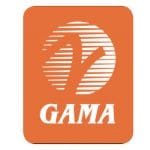EASA SIB Airworthiness 2023-02- Broken Aileron Cable & Non-reversible Filtering of CPD for Flight Data Recording
On 14 November 2019, shortly after take-off in strong crosswind conditions and following autopilot engagement, the flight crew of a DHC-8-402 noticed that both control wheels were offset to the right in order to maintain level flight. The flight crew took manual control of the aeroplane and noted that the displacement needed to be applied manually on the control wheel was similar to that with autopilot engaged. A decision was made to land at an alternate airport.
During the approach and as the airspeed reduced, the outboard spoilers became active and the flight crew noticed that the degree of deflection needed to apply on the control wheel reduced. The approach and landing were completed uneventfully.
DHC-8-400 aileron and spoiler control cables:
Roll control on the DHC-8-400 series is achieved using a combination of ailerons and spoilers, spoilers being a secondary flight control system. The inboard spoilers operate across the full speed range, whereas the outboard spoilers are automatically de-activated above 170 kt and re-activated as the aeroplane decelerates through 165 kt. The aileron control cables have a diameter of 1/8 inch and are constructed from 7 strands, each one consisting of 19 wires. Six of the strands are concentrically wound around the central one.
Post-flight examination of the incident aeroplane revealed that the lower left aileron cable was broken just outboard of the engine where it passed over a pulley to accommodate a change in the wing dihedral. There was no other damage found on the aeroplane.
Since 2004, to address premature wear in aileron and spoiler control cables, Bombardier (and later De Havilland Aircraft of Canada) issued several AOM and SBs (see references above) as well as updates of the Aircraft Maintenance Manual (AMM).
Particularly, AOM 228 explained that aileron cables running along the rear wing spar seem to be more susceptible to wear, major contributing factors for that are identified as:
• Cable tension rigging below the required value.
• Greater exposure to dirt and carbon brake dust thrown up by the landing gear.
• Higher vibration levels due to the cables’ proximity to the engine nacelle.
AOM 228 also reminded that the periodic visual inspection of the aileron and spoiler cables in this area should be reduced from 8 000 flight hours (FH) to 2 500 FH and that a cable tension check every 2 500 FH had also been introduced into the AMM.
On November 2015, SB 84-27-68 (later revised) introduced modified aileron and spoiler cables
(Modsum 4-113888) with external polymer sleeves added to provide local wear protection to the cable where it comes into contact with the pulleys; modified pulleys were also introduced to accommodate the increase in diameter of the cable resulting from the addition of the protective sleeve. New aeroplanes delivered starting with serial number (s/n) 4536 (November 2016) have this modification fitted. For the earlier delivered aeroplanes, retrofit embodiment was recommended (i.e. at operator’s discretion); such modified cable arrangement had not been fitted to the aeroplane that experienced the above described event.
Results of a post-event examination of aileron and spoiler control cables indicated that, for the sampled cables, those modified as per SB 84-27-68 showed no evidence of wear.
DHC-8-400 Flight Data Recording (FDR) parameter filtering:
During the AAIB investigation of the above event, it was discovered that parameter filtering was applied to the position of control wheels and columns as well as to the position of the rudder pedals as recorded in the FDR. The purpose of this filtering was to smooth out signal noise using a moving average calculation that is not reversible. This meant that during rapid control movements the actual position of the controls could not be reliably reconstructed from FDR data. The filters also caused the recorded positions of the control inputs to lag the movement of the control inputs to lag the movement of the control surfaces, which were not filtered, by about 0.5 second.
The FDR system fitted to the DHC-8-400 series aeroplane that experienced the above event met the minimum performance standard defined by EUROCAE document ED-55 dated 1990. This standard provides requirements for the accuracy of the FDR parameters but does not address filtering. This standard was superseded by EUROCAE document ED-112 dated 2003.
The EU Operational requirements AMC1.1 CAT.IDE.A190 applicable to aeroplanes with an individual certificate of airworthiness (CofA) first issued on or after 01 January 2016 and AMC1.2 CAT.IDE.A.190 applicable to aeroplanes with an individual CofA first issued on or after 01 January 2023 specify that FDR minimum operational performance specifications (MOPS) should be those laid down in ED-112 or ED-112A (dated 2013) respectively. Both ED standards state that filtering shall be avoided for parameters representing primary flight control positions and forces, position of the power levers and position of the primary flight surfaces, unless parameters recorded values meet the accuracy requirements under extremely dynamic conditions with the filtering applied or if original sensor signal values can be reconstructed from filtered data.
Starting from DHC-8-400 s/n 4472 onwards, for which the first individual CofA was issued on July 2014, all aeroplanes were delivered with a Part Number (P/N) 1152862-5 flight signal conditioning unit (FSCU) installed, which does not filter control input position parameters and input force parameters. For earlier DHC-8-400 series aeroplanes not delivered in this configuration, SB 84-31-65 Rev B (or later revisions; applicability of this SB is restricted to a specific aeroplane s/n range) offers a retrofit modification. Alternatively, the existing FSCU can be replaced with a P/N 1152862-5 FSCU in accordance with the AMM and IPC (illustrated parts catalogue) which contain qualified interchangeability conditions and instructions.
At this time, the safety concern described in this SIB is not considered to be an unsafe condition that would warrant Airworthiness Directive (AD) action under Regulation (EU) 748/2012, Part 21.A.3B.
Recommendation(s):
EASA recommends operators of affected aeroplanes to accomplish the following actions, unless already implemented:
- Retrofit the aeroplane in accordance with the instructions of SB 84-27-68 Revision C (or later revisions): Flight Controls – Aileron and Spoiler Wing Route Cables Wear Protection – Modsum
4- 113888; and - For aeroplanes with a s/n below 4472 and without an FSCU P/N 1152862-5 installed: to embody SB 84-31-65 Revision B (or later revisions), or in case the aeroplane s/n is not covered by the applicability range of this SB, replace the existing FSCU with a P/N 1152862-5 FSCU through the applicable AMM and IPC qualified interchangeability conditions and instructions.




